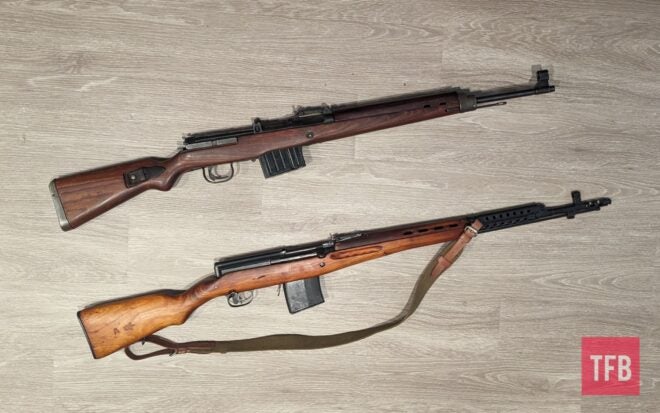In my last article on the K.43 I said that if I was able to get my grubby paws on an SVT-40 I’d do a comparison of the gas systems. Well, after getting extremely lucky on a GunBroker listing, I’m able to do just that.
Gas Systems of the Eastern Front – The K.43 and the SVT-40
First, a little bit of background. The Gewehr or Karabiner 43 (same gun, different designations) was the German answer to the Soviet SVT-40. While both the Soviets and the Germans had tinkered with earlier semi-automatic battle rifle designs, the SVT-38 and the Gewehr 41 respectively, each suffered from reliability issues. Thus, both militaries quickly moved on to improved versions, the SVT-40 and the G/K.43.
Captured SVT-40s were sent back to Germany for study during Operation Barbarossa, the German invasion of the Soviet Union in 1941. Both Nazi Germany and the Soviet Union had intended for their respective semi-auto to completely replace their bolt action primary service rifle (the Mauser K.98 and the Mosin M91/30) but were stymied in this goal by the realities of wartime production constraints.
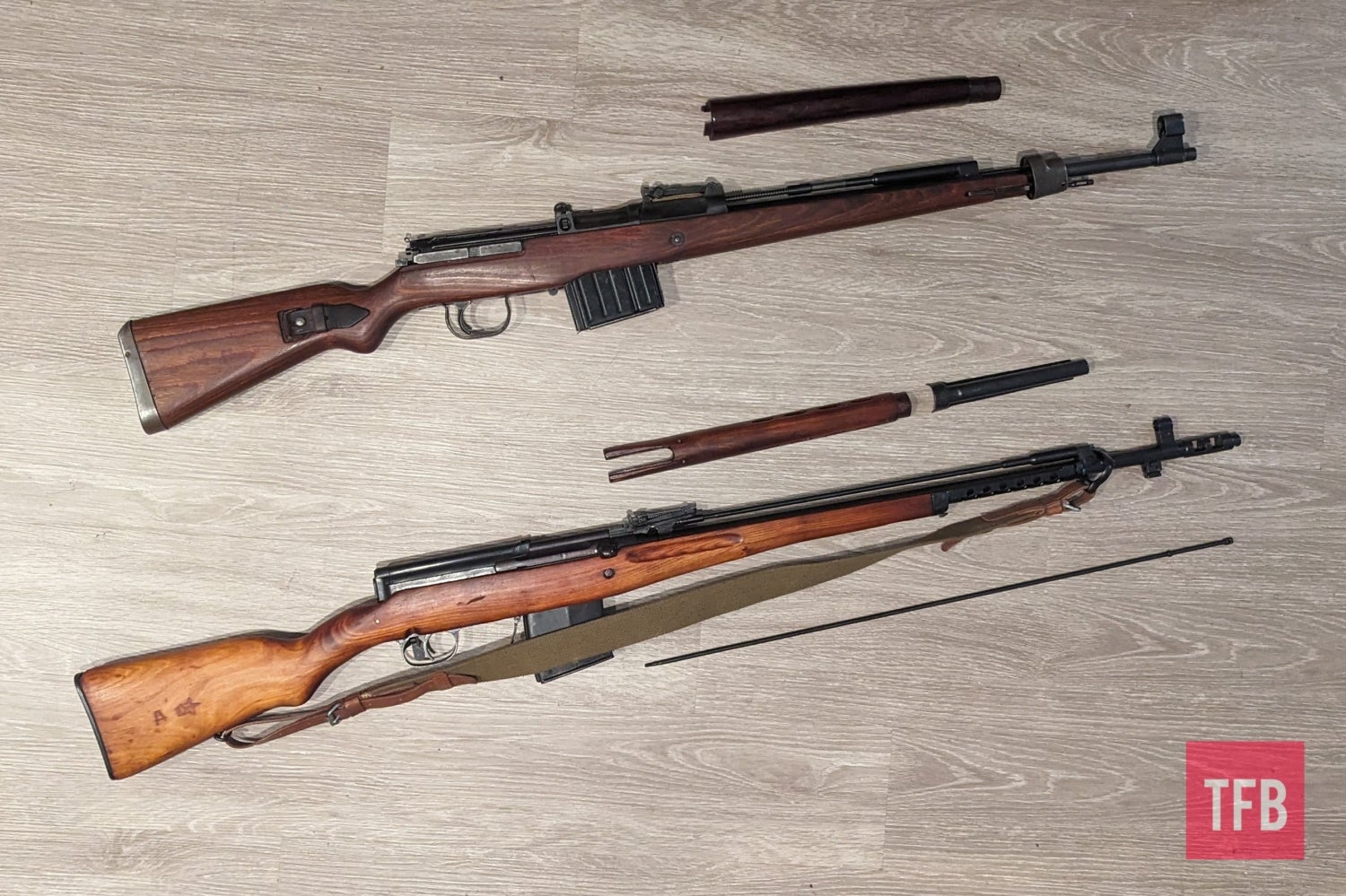
The K.43 (above) and the SVT-40 (below) shared very similar gas systems.
In the pictures below the K.43 has a Frontline Militaria G43 Shooter’s Kit installed. While this does allow for the insertion of adjustable gas inserts, it is otherwise identical to the original parts. The G/K.43 was designed to be extremely overgassed for reliability purposes. Unfortunately, this means that over time the gun will beat itself to death. For recreational shooters like myself, a Shooter’s Kit is necessary to preserve the gun.
So how did they work?
Both rifles featured a very similar, nearly identical in fact, gas operating system. They are both short-stroke gas piston guns, with the primary difference being that the SVT-40 uses a tilting bolt, while the G/K.43 uses a flapper-locking bolt. The gas cycle begins close to the muzzle, with a port drilled into the barrel. From there, gas enters a gas block and stationary gas piston, which flows into gas cylinders to direct the energy back toward the bolt.
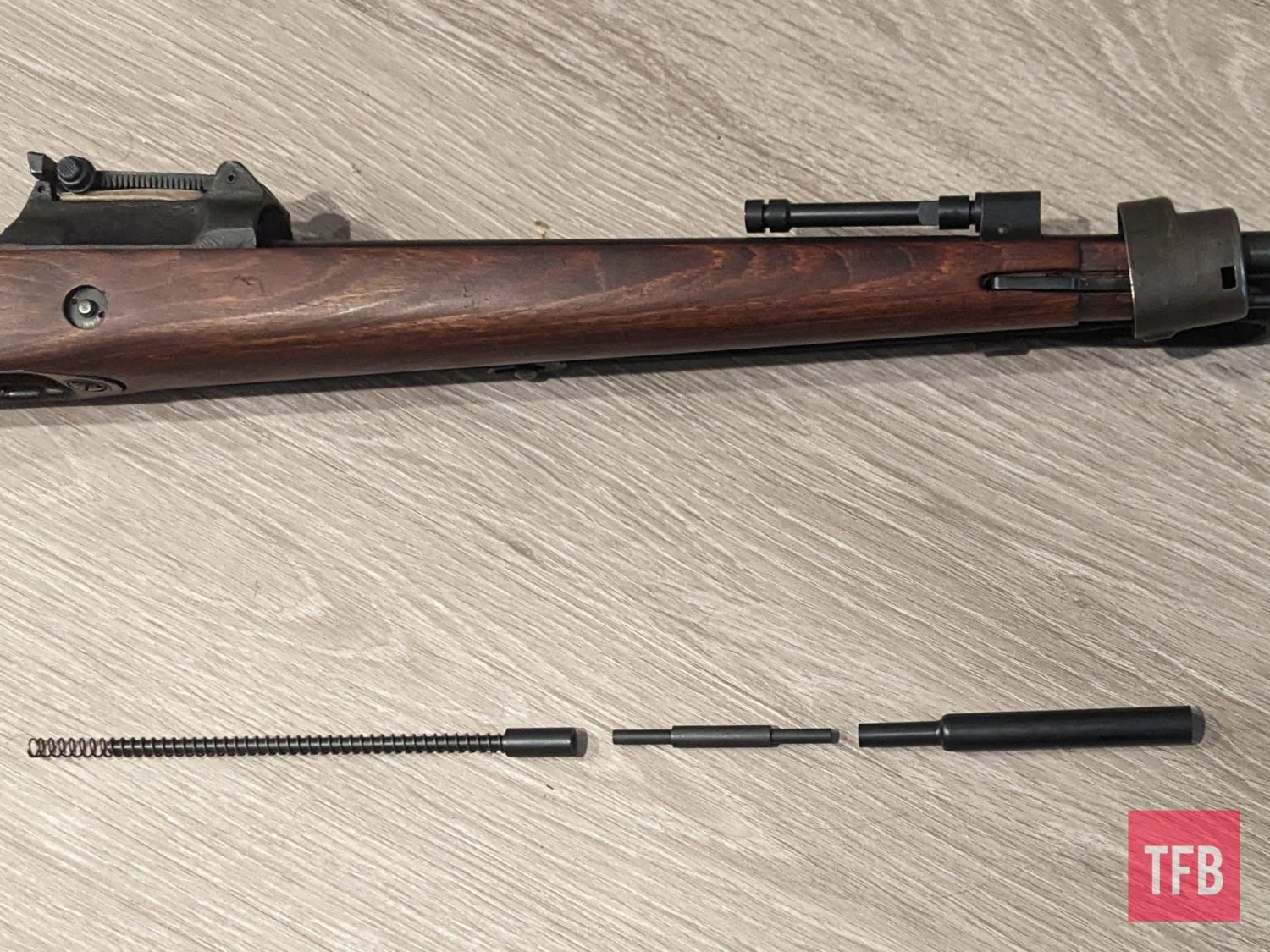
The gas system of a K.43. Note the piston still attached to the gas block on the barrel. This particular system is, as mentioned, a Frontline Militaria Shooter’s Kit, but other than permitting the insertion of a gas regulator, it is otherwise identical to the original parts.
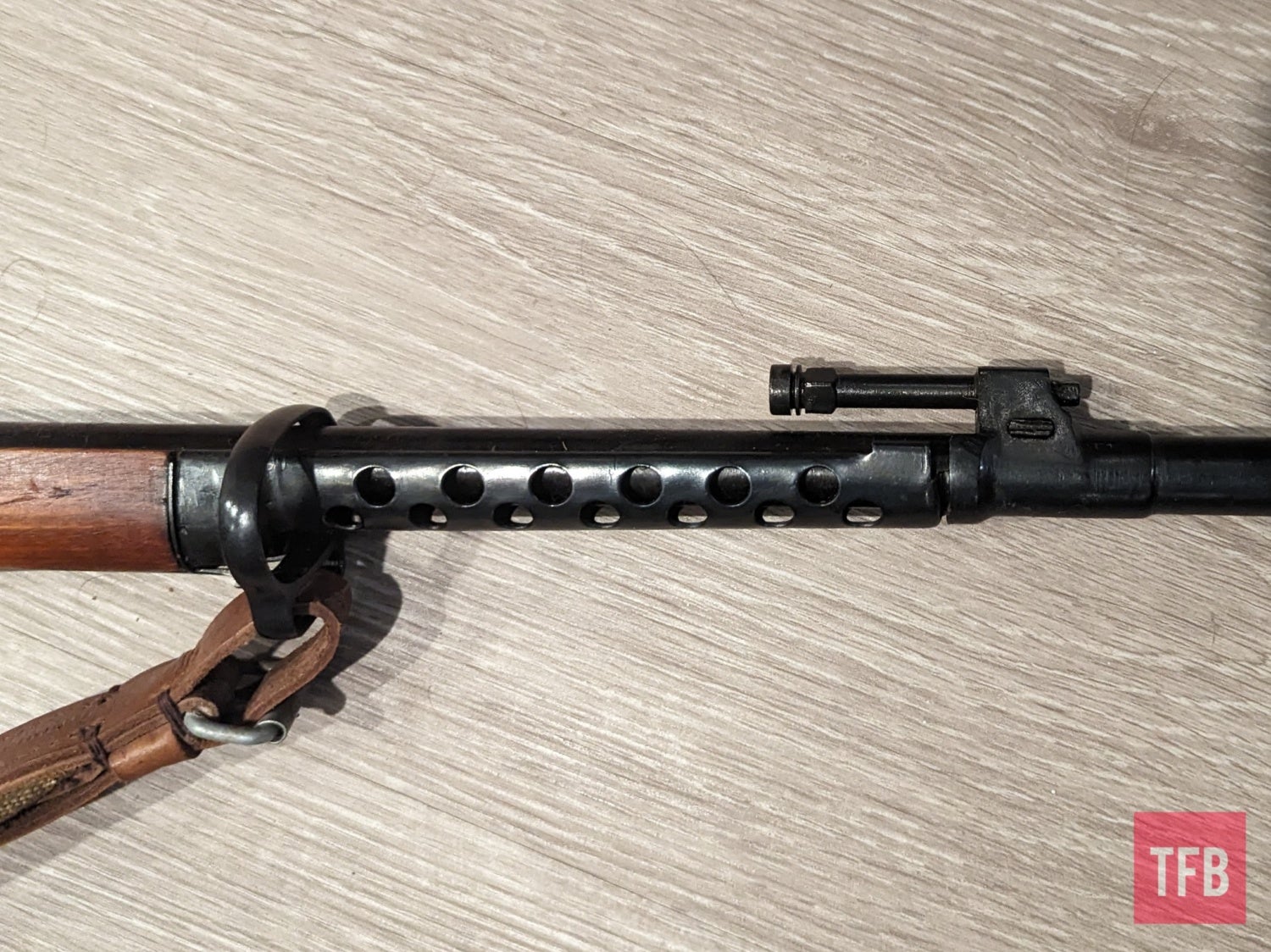
The nearly identical piston on an SVT-40. This part is original, as the SVT-40 does not require a shooter’s kit to avoid beating itself to death.
After that, the gas is trapped by a gas cylinder, which begins to impart energy to a piston rod.
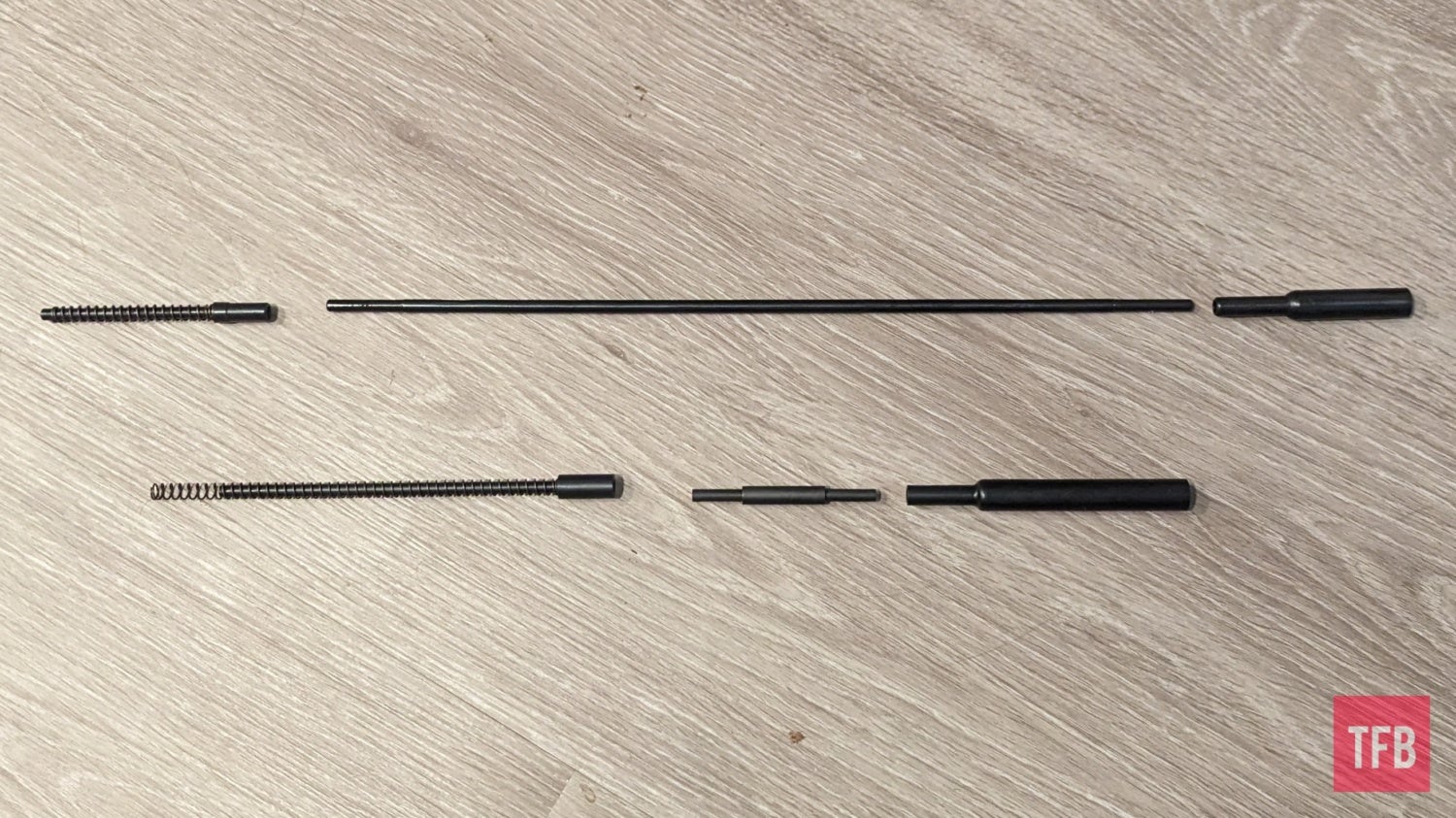
The two gas systems laid next to one another. The SVT-40’s above, the K.43’s below. The parts are (from left to right) the piston spring and piston, the piston rod, and the gas cylinder.
The piston rod hits the piston itself, which hits the bolt, which recoils to the end of the receiver, and you know the rest.
Interestingly, the two designs depart most noticeably in their piston rods. Tokarev opted for a very long piston rod, while Walther opted for a shorter overall design as well as a much shorter piston rod. However, that’s merely the most obvious difference, not the only one. Walther also opted for a larger gas cup and piston spring, as well as a more contoured piston rod.
So which one is better?
Whether one or the other is “better” is difficult to say with any kind of real authority. That said, I lean toward the SVT-40. Both guns apparently fared well in the harsh environment of the Eastern Front, but the K.43 had a notable design flaw. While it generally functioned reliably, as previously mentioned it would eventually beat itself to death, a problem the SVT-40 does not have. Flowing from this same overgassing issue, the K.43 did not have an adjustable gas system. The SVT-40 on the other hand, does have an adjustable gas regulator, which is a point in its favor.
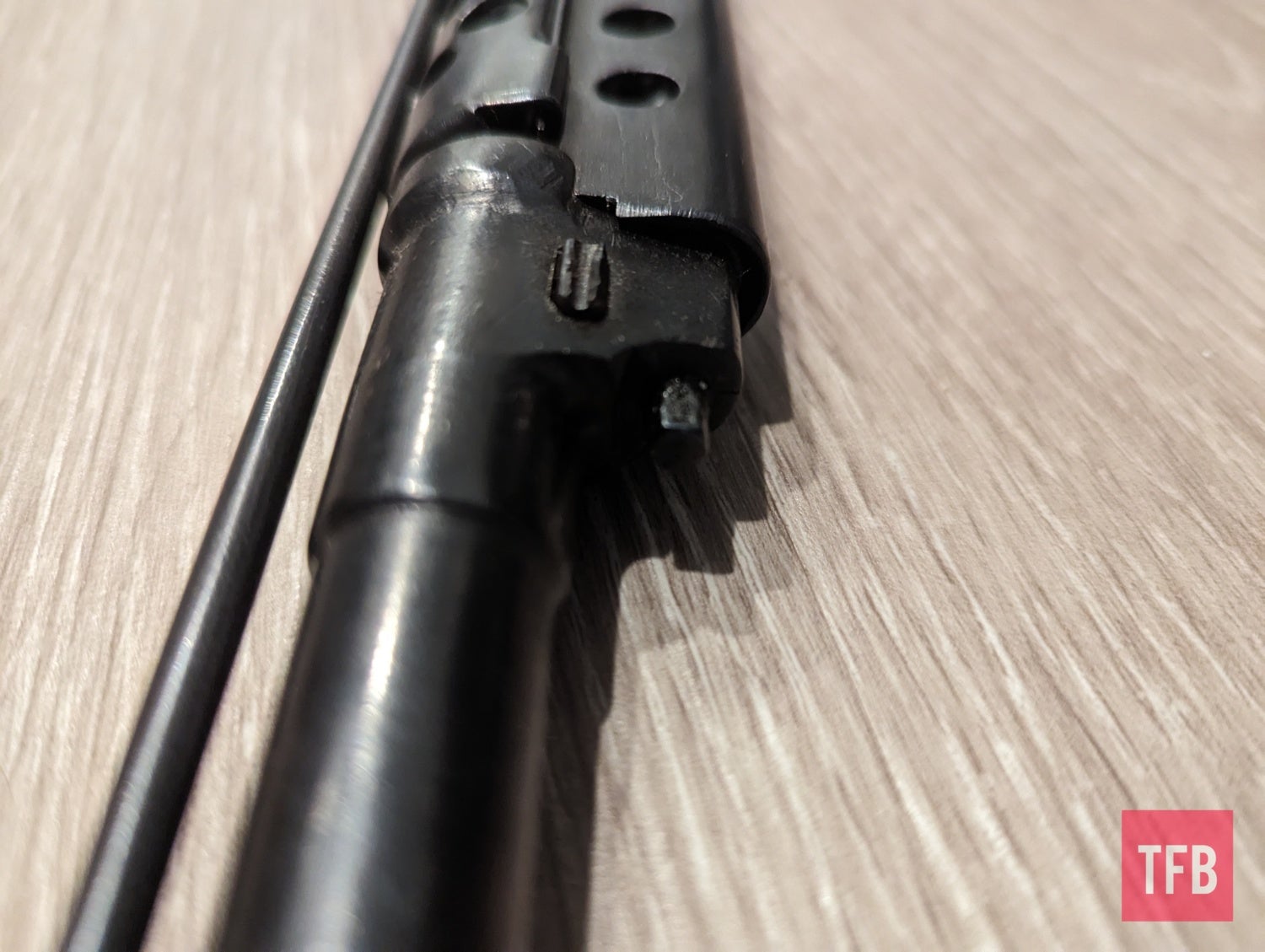
Note the small knob protruding toward the camera. This is the SVT-40’s gas regulator, which allows for adjustment.
If you want your Gewehr or Karabiner 43 to avoid beating itself to death, you need to get a Shooter’s Kit. This allows for the insertion of different-sized gas plugs. A smaller plug lessens the flow-through of the gas, which lessens the force of the bolt slamming into the receiver.
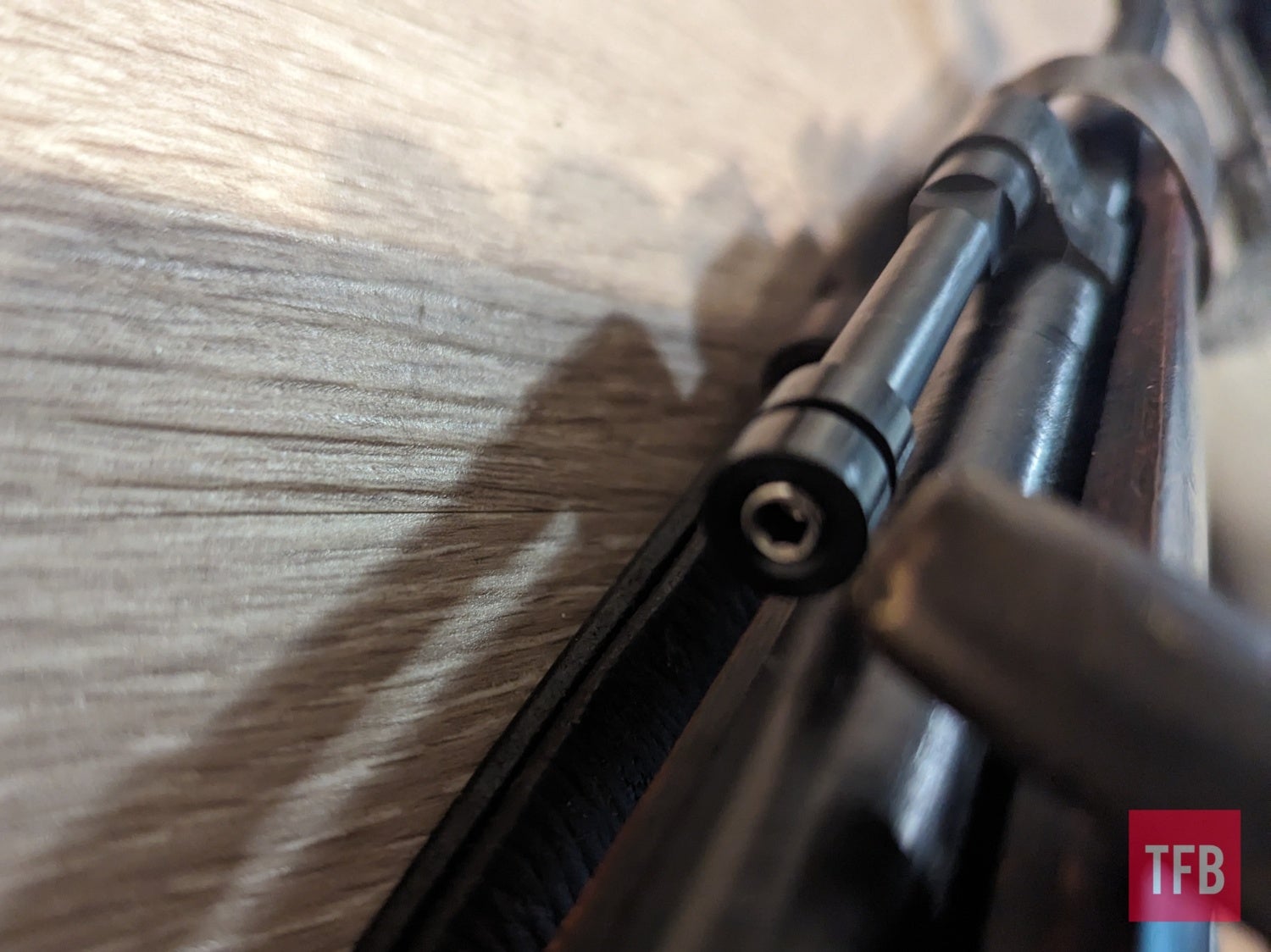
The aftermarket gas plug on the K.43, which keeps it from committing suicide.
But of course, it’s also important to keep in mind exactly when these two different rifles were designed. The SVT-40 was designed after the lessons of the Winter War between the Soviet Union and Finland. Soviet planners envisioned replacing all M91/30s with SVT-40s, and at the time this seemed plausible. Meanwhile, Mauser designed the Gewehr 43 in the middle of the German invasion of the Soviet Union and was subject to all of the shortcuts and compromises required by the straining German economy. It’s hardly surprising then that the Germans opted to simply overgas the Gewehr 43 instead of including an adjustable gas system.
Final Thoughts
I hope this has proven at least somewhat educational and engaging. The SVT-40 and the K.43 date from a period of rapid change in firearms technology, and while neither can be considered “as good” or “reliable” when compared to a modern rifle, they are still fascinating pieces of history. Weird old guns have a special place in my heart, and early self-loading rifles especially. The things I would do to get my hands on an M1908 Mondragón or a Springfield-Pedersen don’t bear mentioning in polite company.
As always, please let me know what you think in the comments, and I look forward to learning what I inevitably got wrong.
 Your Privacy Choices
Your Privacy Choices
